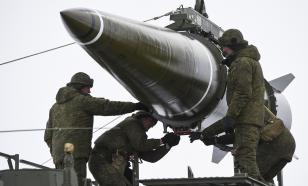NASA scientists solve mystery of powerful gamma ray bursts
NASA scientists have solved the mystery of the origin of gamma ray bursts, the most powerful explosions known in space.
The bursts are split-second flashes, brighter than a billion suns that have been too fast for scientists to catch. But researchers at National Aeronautics and Space Administration (NASA) unveiled that they occur when a black hole collides with a neutron star, or as the result of the collisions between two neutron stars.
"Gamma-ray bursts in general are notoriously difficult to study, but the shortest ones have been next to impossible to pin down," said Neil Gehrels, the lead investigator of NASA's Swift satellite.
"All that has changed. We now have the tools in place to study these events," he said.
The satellite detected a burst in May and NASA's High-Energy Transit Explorer detected another in July. Based on these findings, the theory was developed. The findings will be published in the October 6 issue of Nature magazine.
NASA said the new discoveries could help scientist detect gravitational waves ripples in space time that have never been seen.
"Short gamma-ray bursts could tell scientists when and where to look for the ripples," a NASA statement said.
More than 130 scientists are in the project, the agency said, reports Hindustan Times.
The explosions are called gamma-ray bursts, or GRBs. Several are recorded every day, coming from all directions of the sky.
Most originate in the very distant universe. One nearby could trigger a mass extinction on Earth.
Gamma rays are the most intense form of radiation, more powerful than X-rays. The afterglow of a single burst, measured in X-rays, radio waves and other wavelengths, can be billions of times brighter than the entire galaxy in which it originates.
Long-duration GRBs typically last about 20 seconds. Previous studies revealed one of these is released when the core of a young and very massive star collapses in a supernova event.
"Gamma-ray bursts in general are notoriously difficult to study, but the shortest ones have been next to impossible to pin down," said Neil Gehrels of NASA Goddard Space Flight Center. "All that has changed. We now have the tools in place to study these events," informs USA Today.
Photo: NASA official site P.T.
Subscribe to Pravda.Ru Telegram channel, Facebook, RSS!


